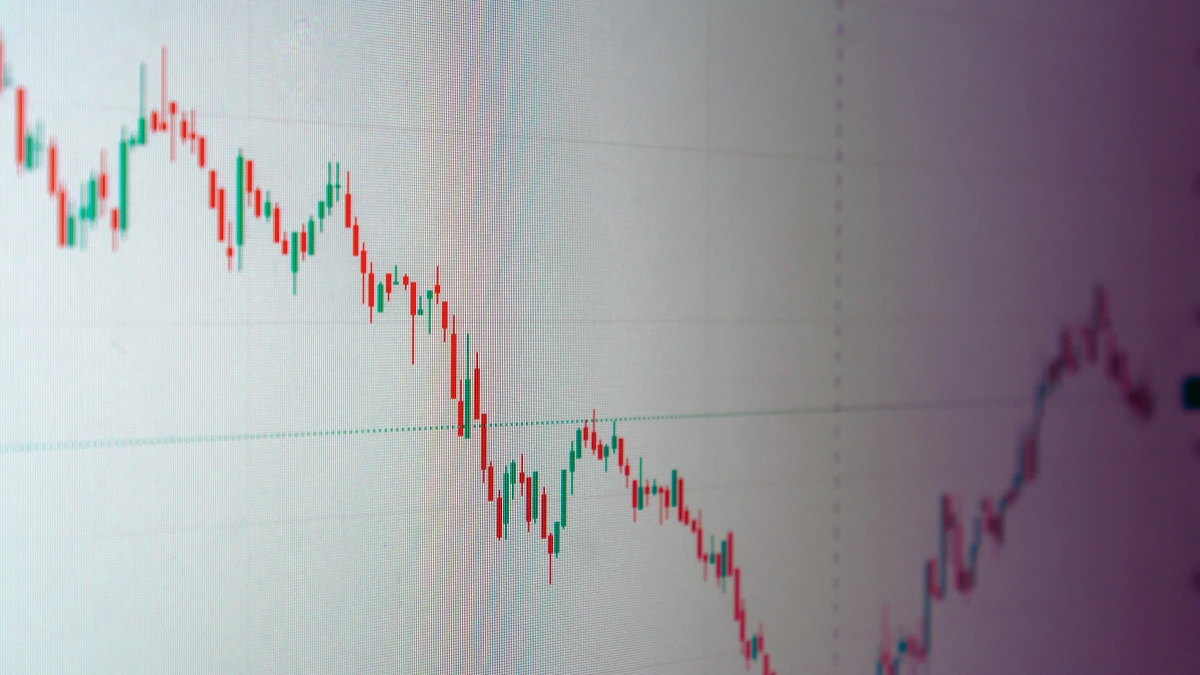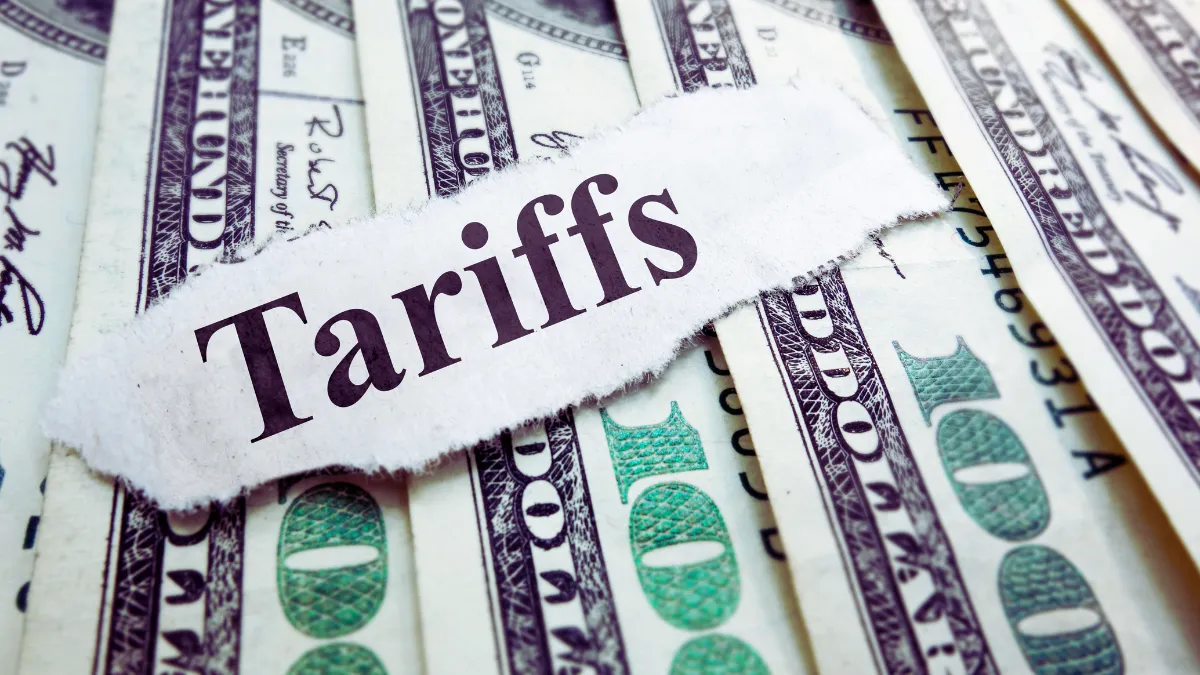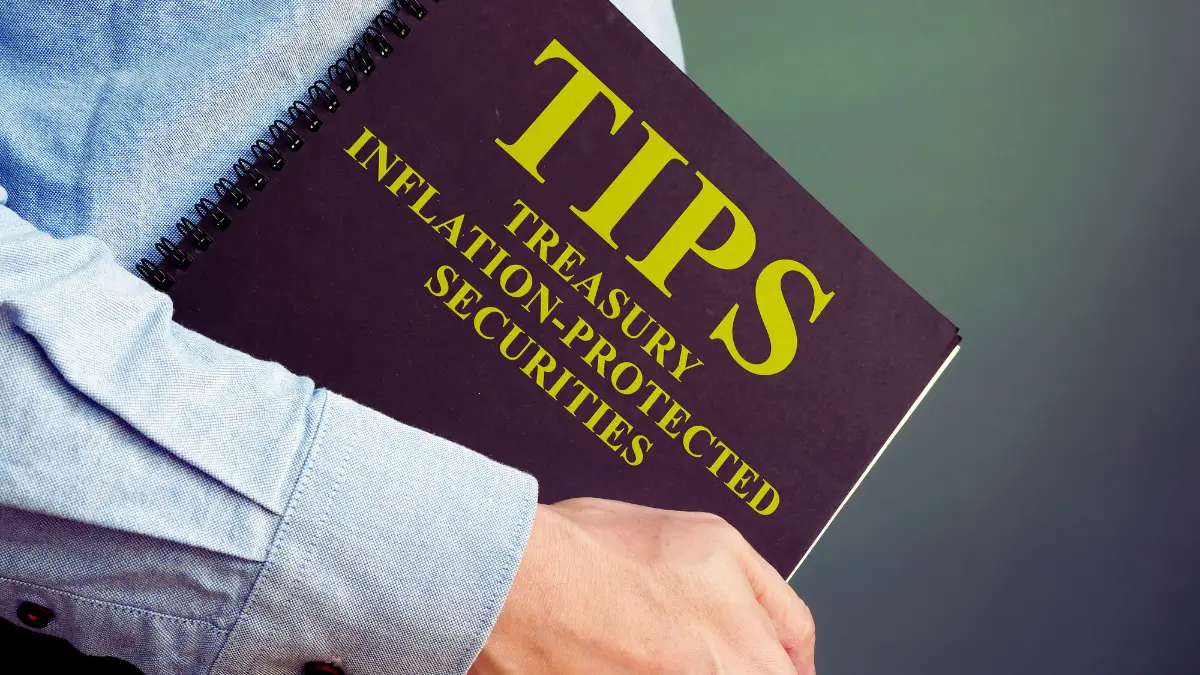Your mortgage rate should be falling right now.
The Federal Reserve cut rates. Inflation is cooling down. Yet here you are, looking at a 30-year mortgage rate of 6.36% in October 2025. If you tried to refinance or buy a house, you know something feels off.
Here’s what’s happening: You’re paying extra interest because investors think our government makes dumb decisions. They actually have a name for it. They call it the “moron risk premium.”
And it’s costing you real money every single month.
What Is the Moron Risk Premium? (And Who Named It That?)

In September 2022, something wild happened in the UK.
Prime Minister Liz Truss announced a plan to cut taxes without explaining how she’d pay for it. Bond investors freaked out. Within one week, interest rates on UK government bonds jumped from 3.2% to over 4.5%.
People lost their retirement savings. Mortgage rates shot up. The Bank of England had to step in and buy bonds to stop a complete meltdown.
An economist named Dario Perkins watched this disaster. He works at a company called TS Lombard. He came up with a brutal but honest term: the “moron risk premium.”
Here’s what it means: When investors think politicians are making reckless choices, they charge extra interest. It’s like your car insurance going up because your teenager borrowed the keys and crashed into a mailbox.
The UK is still paying this penalty today. Their borrowing costs stayed higher than other European countries even after Truss resigned. She only lasted 49 days as Prime Minister, but her mess stuck around.
Fast forward to April 2025.
The same thing started happening in America. The Trump administration announced tariffs that shocked the market. They were bigger than expected. More random. Investors couldn’t predict what would happen next.
On April 4, 2025, the 10-year Treasury yield sat at 3.99%. By April 8, it hit 4.49%. That’s a massive jump in just four days. The 30-year bond even topped 5% for a moment.
Sander Tordoir is the chief economist at the Centre for European Reform. He said it plainly: “Confidence is a feeble, vulnerable commodity. The US is squandering it by the boatload.”
The term “moron risk premium” came back. Financial newspapers started using it again. Because it fit.
Why Your Mortgage Rate Won’t Drop (Even When It Should)

You might wonder: The Fed cut rates three times in 2024. They’re trying to help the economy. So why didn’t your mortgage rate go down?
The answer involves something called the term premium.
Think of it this way: When you lend someone money for 10 years instead of one year, you take on more risk. A lot can happen in 10 years. Inflation might spike. The economy might crash. Interest rates could swing wildly.
So you charge extra for that risk. That extra charge is the term premium.
On January 13, 2025, the term premium on 10-year bonds hit 0.8%. That was the highest level since 2011. Investors were saying: “We need almost a full percentage point extra to hold long-term US debt because we don’t trust what’s coming next.”
Here’s the key part: Mortgage rates follow the 10-year Treasury yield more than they follow the Fed’s rate.
The Fed controls short-term rates. But mortgages are long-term loans. So when the 10-year Treasury yield goes up because of the term premium, your mortgage rate goes up too. Even if the Fed is cutting rates at the same time.
That’s why 2025 has been so frustrating. The Fed cut rates, hoping to help homebuyers. But policy chaos pushed the term premium higher. The two forces canceled each other out.
Preston Caldwell is a senior economist at Morningstar Investment Management. He explained it in January 2025: “If we look at mortgage rates, they tend to be most tied to the longer end of the yield curve. The federal funds rate moves short-term rates, but the 10-year Treasury yield can move in the opposite direction.”
That’s exactly what happened.
What This Actually Costs You in Real Dollars

Let’s make this concrete.
Say you’re buying a house with a $400,000 mortgage. At 6.3% interest, your monthly payment is $2,475.
If rates were at 5.5% (where they’d probably be without the chaos), your payment would be $2,271.
That’s $204 more per month. Or $2,448 per year.
Over 30 years, you’ll pay an extra $73,440 in interest. That’s money that could have gone to your retirement, your kids’ college, or financial security.
And it’s not just mortgages.
Car loans cost more. Credit card interest stays high. Business loans are expensive. Every form of borrowing gets hit.
The US government pays more, too. America has $36 trillion in debt. When interest rates go up even a little bit, taxpayers pay billions more to service that debt.
A Bank of England study published in July 2024 found that when Liz Truss’s mini-budget caused the bond market crisis in 2022, liability-driven investments by pension funds accounted for at least half of the fall in bond prices, with fiscal policy likely accounting for the remainder.
The researchers—Danny Walker at the Bank of England, Gabor Pinter at the Bank for International Settlements, and Emil Siriwardane from Harvard Business School—showed that market panic and forced selling made a bad situation twice as bad.
The same dynamic happened in America in April 2025. The initial shock came from tariff announcements. But then selling pressure built on itself. People got scared. They sold bonds. Prices dropped. Yields jumped. And you ended up paying more.
The April 2025 Crisis: How Tariffs Triggered Market Panic

April 2, 2025, changed everything.
The Trump administration announced tariffs that went way beyond what markets expected. They were broader. More aggressive. And nobody could figure out the strategy.
On April 2, what they called “Liberation Day,” the announcement hit. Stock markets dove. Bond yields spiked. Currency markets went haywire.
Then came the really bad part.
Nine days later, on April 11, the administration announced a 90-day pause on some tariffs. Markets didn’t see this as smart planning. They saw panic.
Bond investors had started selling US Treasuries. Foreign countries were backing away. The administration blinked.
The Brookings Institution analyzed what happened to the Treasury market during this period. They found that the 10-year Treasury yield jumped with unusual speed. Market liquidity dried up because dealers pulled back from risk-taking when volatility spiked.
This wasn’t just about one policy decision. Trade policy uncertainty hit a record high in early 2025, according to global economic data tracked by central banks.
Here’s why it got so bad so fast:
First, the tariffs themselves were confusing. They changed by country. By product. With exceptions that didn’t make sense. CEOs couldn’t plan. They put investments on hold.
Second, the reversals made it worse. Announce tariffs. Pause them. Threaten more. Back down again. Every flip-flop made investors trust US policy less.
Third, other countries responded. China imposed counter-tariffs. Europe started looking for trade partners that weren’t America. Canada worked on reducing internal trade barriers so it’d depend on the US less.
Think about what this means long-term. For decades, countries around the world saved dollars and bought US Treasury bonds because America was stable. Predictable. The safe choice.
Now, economists are literally comparing us to Liz Truss’s UK disaster.
The Committee for a Responsible Federal Budget did the math. They found that the current House budget package would increase the primary deficit by 1.7% of GDP in 2027. That’s actually bigger than Truss’s mini-budget, which increased the UK’s deficit by 1.5% of GDP.
And here’s the scary part: America’s fiscal situation is already worse than the UK’s was. We have way more debt as a percentage of our economy.
Foreign Investors Are Losing Faith (And That Costs You)

For your entire life, “safe as US Treasuries” meant something. That phrase is becoming less true.
Foreign investors used to fight to buy American bonds. Now they’re thinking twice.
Robert Ross, who writes for Total Wealth Research, put it bluntly in April 2025: “Foreign capital now demands a discount to hold US assets. That’s the moron premium in action.”
Here’s how this works:
When other countries sell stuff to America, they get paid in dollars. Historically, they took those dollars and bought US Treasury bonds. It was automatic. Safe. Profitable.
But now? They’re not so sure.
If America succeeds in eliminating trade deficits (which is the stated goal), those countries won’t have as many dollars to invest. China alone holds about $800 billion in US Treasuries. If trade with China drops to zero, why would they keep holding all those bonds?
They wouldn’t. They’d sell them. And when the supply of bonds for sale goes up without enough buyers, prices drop. Yields rise. And your interest rates go up.
It gets worse. Europe is preparing for America to be an unreliable partner. Germany changed its constitution to spend more on defense. European countries are making backup plans that don’t include depending on the US.
The Centre for European Reform economist said: “Some of the moron risk premium will linger in the markets even if policies reverse. The idea of US exceptionalism in markets has been crushed for now.”
That last part matters. Even if policies get better, the damage to America’s reputation sticks around. Like a bad credit score, it takes years to rebuild trust.
5 Ways to Protect Your Money Right Now
You can’t control Washington. But you can control your response.
1. Lock in Rates If You’re in the 7-8% Range

If you bought a house or refinanced in 2023 or 2024 when rates were higher, look at refinancing now.
Brian Shahwan is a vice president at William Raveis Mortgage. He told homeowners in October 2025: “Borrowers who secured financing with rates in the 7% to 8% range in the last year or two might want to consider refinancing today.”
Even dropping from 7.5% to 6.3% saves you $144 per month on a $400,000 mortgage. That’s $1,728 per year. Worth the refinancing costs.
Some people are looking at adjustable-rate mortgages as a bridge. The initial rates are lower than fixed rates. If you think rates might drop in 2026, an ARM could save you money now with the option to refinance later.
2. Build a Bigger Emergency Fund

Cash feels boring when stocks are exciting. But 2025 proved that boring wins.
Financial planners recommend 3-6 months of expenses in savings. During times of high uncertainty, push that to 6-9 months if you can.
Why? Because when markets panic, you don’t want to sell investments at a loss to cover bills. Cash gives you options. It lets you wait out the chaos.
Mark Loh is a senior strategist at State Street Global Markets. He explained why uncertainty demands more cash: “The market is uncertain about policy. Mass deportations, full tariffs—this type of discussion impacts where prices, wages, and potential volatility might shake out.”
3. Diversify Beyond Just US Stocks

J.P. Morgan’s private banking team told clients in March 2025 to add hedge funds, gold, and structured notes to build more resilient portfolios.
This doesn’t mean selling everything American. It means spreading risk.
Gold has been outperforming the S&P 500 in 2025. That’s unusual. Gold typically does well when people don’t trust other investments. Right now, that’s exactly what’s happening.
Consider international stocks, too. Europe and Asia offer exposure to economies that aren’t dealing with the same policy chaos. You get different risks, which means better overall protection.
4. Use Inflation-Protected Securities

Tariffs cause inflation. Most economists agree on this. When import costs go up, companies pass those costs to you.
Treasury Inflation-Protected Securities (TIPS) adjust their value based on inflation. When inflation rises, your TIPS are worth more. They’re designed exactly for times like this.
Real estate also hedges inflation, though it’s less liquid than TIPS. If you own property, inflation eventually pushes rental income and property values higher.
5. Stick to Your Plan (But Review It)

Here’s advice from Carolyn McClanahan, a certified financial planner in Florida: “I strongly believe in sticking to an investment policy statement that reflects my needs, and I tune out the rest of the noise.”
Notice she said “investment policy statement.” That’s a written plan about your goals, risk tolerance, and strategy. If you don’t have one, make one now.
Review it quarterly. Ask: Has my situation changed? Do these investments still match my goals? Am I panicking or making logical decisions?
Ivory Johnson runs Delancey Wealth Management. He told clients: “If a trade war will reduce economic growth, what asset classes should you overweight in that environment? That’s different than changing your allocation because of a policy decision.”
Smart adjustments are okay. Panic selling is not.
J.P. Morgan research shows the stock market has returned 10% on average historically. Over the last eight years, it’s been just over 11%. Long-term investing still works. But you need to survive the short-term chaos first.
What Financial Pros Are Telling Their Clients

I looked at what certified financial planners and economists are actually recommending right now. Not hot takes on Twitter. Real advice to real clients.
The consensus is clear: Stay informed, but don’t overreact.
Rick Sharga runs CJ Patrick Company. He’s been in housing finance for decades. In January 2025, he said, “We’re in somewhat uncharted territory when it comes to mortgage rate predictions for 2025. Prospective homebuyers should figure out what they can afford based on whatever current mortgage rates are, and not wait for rates to decline dramatically.”
That’s important. Don’t put your life on hold waiting for perfect conditions. They might not come.
Lee Baker founded Claris Financial Advisors in Atlanta. He sees opportunity in the chaos: “There are likely to be tremendous buying opportunities in the wreckage. But it requires both diligence and patience.”
Translation: When everyone panics and sells, good investments get cheap. But you need cash on hand and the discipline to buy when it feels scary.
Here’s what most advisors agree on for 2025:
Mortgage rates will probably stay in the mid-6% range all year. Realtor.com updated its forecast in mid-2025 to predict rates averaging 6.7%, falling only to 6.4% by year-end. That’s higher than their original forecast.
The National Association of Home Builders expects rates to average 6.74% in 2025, with modest improvement to 6.32% in 2026.
Don’t expect rates below 6% anytime soon. The Fed could cut more, but the term premium will keep long-term rates elevated. Policy uncertainty isn’t going away.
The average 401(k) balance at Fidelity was $131,700 at the end of 2024. The market dropped about 7% in one week during April’s crisis. That’s $9,219 in paper losses for the average person.
But here’s the thing about paper losses: They’re only real if you sell. Most financial advisors told clients to hold steady. The people who sold locked in their losses. The ones who waited recovered.
Why This Matters More Than Past Rate Spikes

You might be thinking: “Interest rates have gone up before. What makes this different?”
Good question. Here’s what’s different:
It’s not about economics. It’s about trust.
In past rate increases, the Fed raised rates to fight inflation. Markets understood the logic. Higher rates today meant lower prices tomorrow. There was a plan.
This time, rates are high because investors don’t trust what comes next. That’s way harder to fix.
You can’t just wait for the Fed to cut rates and solve the problem. The Fed already cut rates in 2024 and early 2025. Mortgage rates barely budged. Because the term premium (that trust tax) canceled out the Fed cuts.
JPMorgan analysts put the recession odds at 60% by the end of 2025. That’s four times the 50-year average. And double what it was at the end of 2024.
A recession would normally push rates down as the Fed cuts aggressively. But if investors don’t trust policy, the term premium could stay high even in a recession. You’d get the worst of both worlds: A weak economy AND high borrowing costs.
That scenario is called stagflation. It happened in the 1970s. It was miserable. And it took years to fix.

